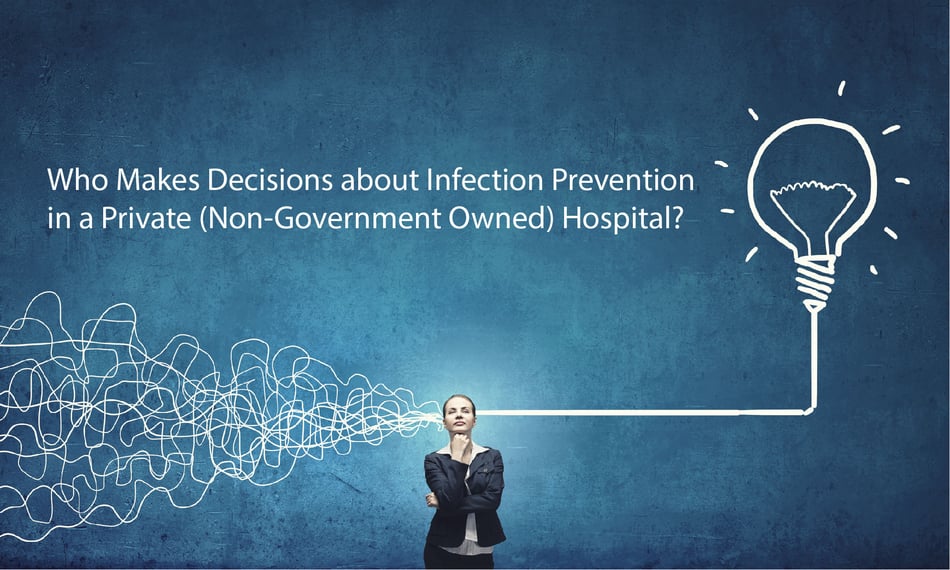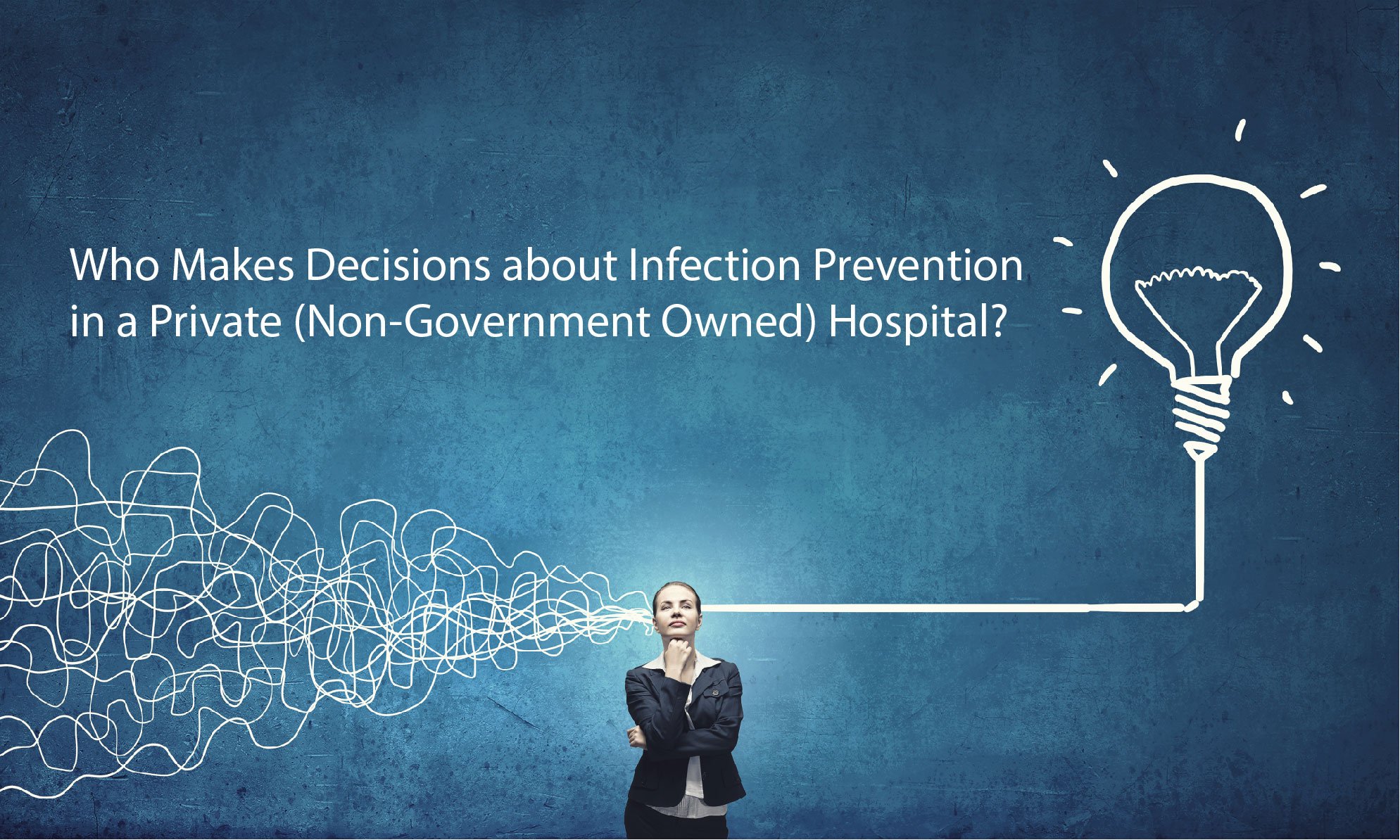Who Makes Decisions about Infection Prevention in a Private (Non-Government Owned) Hospital?

 Hospitals are the setting for countless decisions each day, decisions that impact patient outcomes, financial investments, community health and so much more. Decisions about the prevention of healthcare associated infections take place at all levels of a hospital hierarchy, from the environmental services cleaner to the Chief Executive Officer. In today’s post, we will look at who makes these critical decisions that impact patient safety, staff well-being, and the overall resilience of a healthcare system.
Hospitals are the setting for countless decisions each day, decisions that impact patient outcomes, financial investments, community health and so much more. Decisions about the prevention of healthcare associated infections take place at all levels of a hospital hierarchy, from the environmental services cleaner to the Chief Executive Officer. In today’s post, we will look at who makes these critical decisions that impact patient safety, staff well-being, and the overall resilience of a healthcare system.
C-Suite | At the forefront of infection prevention (IP) efforts is the hospital leadership team. The Chief Executive Officer (CEO), Chief Medical Officer (CMO), and other executives play a pivotal role in establishing a culture of infection control - and a culture of innovation. Their decisions shape policies, allocate resources for training, and set the tone for the entire organization's commitment to not only reducing and eliminating the threat of healthcare-associated infections (HAIs), but also the way employees support each other and feel empowered to make suggestions. If these top leaders take the approach that every HAI is avoidable, and back that belief up by inviting experts - both internal and external - to propose solutions and then investing in those solutions, then the entire facility can take on that perspective.
Board of Directors | The Board of Directors, responsible for governance and oversight, can also play a role in reducing HAIs by ensuring that the hospital’s strategic direction includes robust measures to prevent and control infections. They are the ones who must ultimately approve investments in technologies, training programs, and the staff required to implement IP goals. This last point is vital and cannot be overlooked, as understaffed facilities see an impact in the ability to meet IP protocols.
Medical Professionals | Hospitals where all medical professionals consider themselves IP professionals create a solid safety net where everyone takes ownership of reducing HAI rates. Each day, medical professionals make decisions that impact IP: Do I wash my hands between every patient and before every procedure? Do I wipe down this equipment before I return it to storage? Do I follow the protocols even when no one is watching? Do I speak up when I see someone skipping a prevention step? The dedicated IP staff makes decisions about how to educate their colleagues, how to report data, and what to recommend to leadership. Medical professionals are on the front lines of innovations, so they are in a position to present ideas and solutions to the Board and C-Suite that can impact IP investments.
Building Support Staff | Environmental services is truly one of the most important departments in the fight against HAIs. Janitorial staff and their leaders are responsible for all the hands-on cleaning and disinfecting that takes place across the hospital, from waiting rooms to operating rooms. Directors and Managers in this department sometimes make decisions about the products used, but at the very least have a say in what is used. They also can decide how to be efficient while also being effective through work schedules, cleaning protocols, and other logistics.
Administrative Teams | Hospital administrators don’t just make sure the materials and supplies are ordered, they also play a role in deciding what those purchases are, always with an eye on the bottom line. It is their job to be fiscally responsible while also providing the necessary funds to get the job done. This is the department that houses the data crunchers, including data about HAI rates, reimbursements, insurance billing, compliance, penalties, and patient satisfaction. They are concerned with hospital reputation, marketing, and growth. How they present that data, and how they are told to mine that data, has a huge impact on the facility’s IP program.
Patients and Caregivers | Let’s not forget the patient and their loved ones when it comes to decisions about IP. These stakeholders, after all, are the ones who are most directly impacted by all these decisions being made around them. Patients and their caregivers can make decisions that impact their risk of acquiring an HAI, including where to seek their care in the first place. They can research options online and choose those with the lowest HAI rates, for example. They can choose to follow the infection prevention instructions prior to a procedure and during recovery. They can also demand changes as a grassroots level that ensures higher quality care, including better infection prevention.
When so many people are involved in decision-making, it can make for a confusingly complex and time-consuming process. Data gets sent up to management, management sends down decisions. Ideas get proposed to leaderships, and leadership requests additional research or evidence. This recursive process can be intimidating, frustrating, and even dissuade participation. For those facilities that work to make this decision-making process more transparent, they benefit from a culture of innovation and communication. And ultimately, both the hospital and its patients are healthier in the long run.
![EOScu Logo - Dark - Outlined [07182023]-01](https://blog.eoscu.com/hubfs/Eoscu_June2024/Images/EOScu%20Logo%20-%20Dark%20-%20Outlined%20%5B07182023%5D-01.svg)




